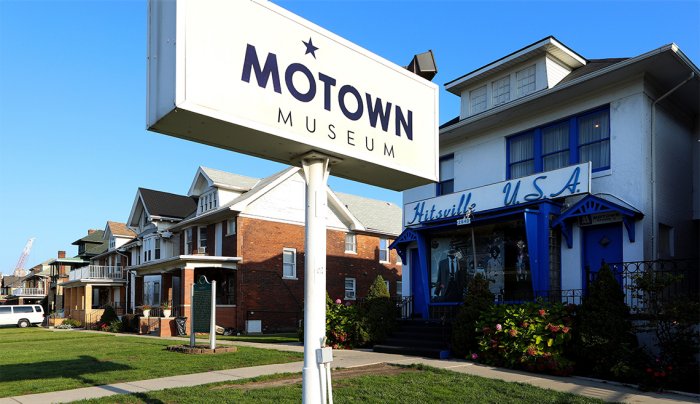
A guide to the legendary launching pad for Marvin Gaye, Diana Ross and other superstars
Who could have predicted a modest 1950s bungalow on a residential street in a Detroit inner-city neighborhood would become the epicenter of a musical movement that rocked the world? Starting with an $800 family loan, Berry Gordy Jr. launched Motown Records in 1959 at the tender age of 27. To chase his dream of making music for all people, the young but fearless Gordy boldly quit his assembly-line job at the Ford Motor Co. plant and purchased 2648 W. Grand Blvd. He moved into the upstairs flat, converted the downstairs rooms into a control center, transformed the garage into a recording studio (the celebrated Studio A) — and the rest is musical history. His gutsy entrepreneurial gamble not only brought us soul music now revered the world over, it also launched a cultural revolution.
Step inside the Motown Museum, housed in that white bungalow with blue trim that was once known as Hitsville U.S.A., and you'll immediately be humming along with the soulful, oh-so-familiar Motown tunes playing throughout this former hit-making and artist-development factory.
The museum's story
Interest in Studio A fueled the museum's creation. Esther Gordy Edwards (Berry Gordy's sister and Terry's grandmother) maintained a company office at the Hitsville U.S.A. location after Motown moved its operations to Los Angeles in 1972. Motown fans often knocked on the door and asked to see Studio A. She graciously obliged time and time again. After touring thousands of people from around the world, it occurred to her that the bungalow-turned-hit machine had become a monument to the music Motown created. Edwards called her brother and said, “Berry, I think we made history and didn't know it.” With Gordy's blessing, and utilizing their vast collection of Motown memorabilia, Edwards opened the museum in 1985 — not just to preserve the legacy of the Motown Record Corp., but also to educate and motivate people, especially youth, with exhibitions and programs promoting the values of vision, creativity and entrepreneurship.
Director’s tip: In the Gallery, look for Michael Jackson’s iconic sequined glove and black fedora, donated to the museum by the late “King of Pop” himself.
"Motown is more than a museum. It's really a community for not only those who see the story through the lens of nostalgia and a music time period that represents their youth, it's also a community for the next generation of aspiring talent,” says Terry.
The Motown Museum is now readying for a 50,000-square-foot expansion called Hitsville Next that will feature interactive exhibits, a performance theater, recording studios, an expanded retail operation and meeting space — all in a new building scheduled to open sometime this year behind the bungalow. The goal, says Terry, is to use “the rich heritage of Motown and its current-day influence to inspire the next generation."
Read the article at www.aarp.com



Leave a comment